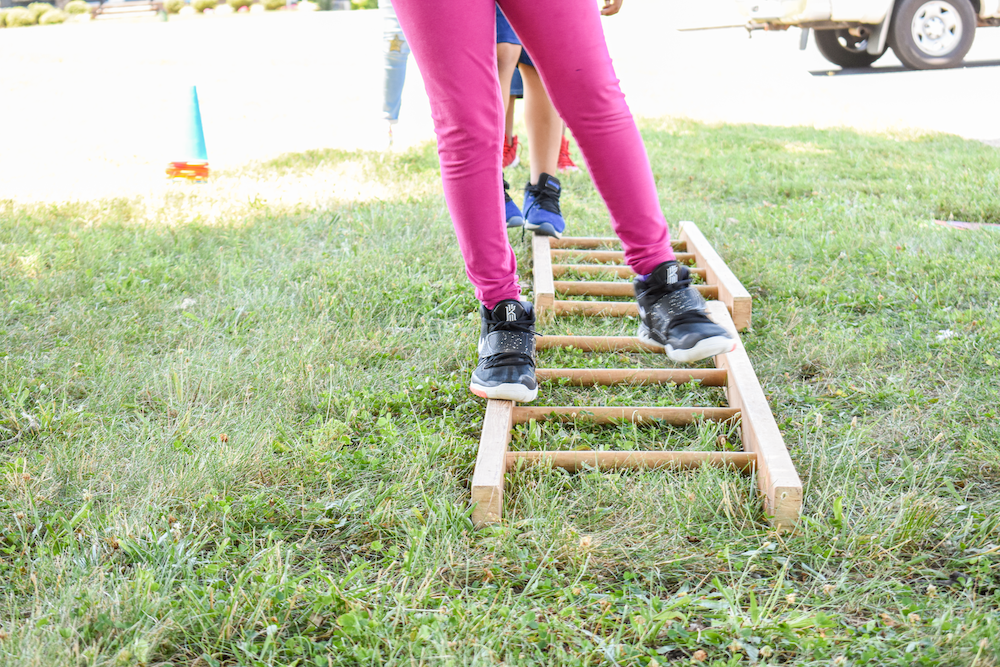My childhood home had a great climbing tree in the front yard. We would climb as high as we could go, on to the tiniest of branches that could reasonably hold us and just watch the world go by. This spectacular positioning allowed us to anticipate a parent’s snack (to be delivered to a side or front porch, not to be enjoyed in the house!) or see a long awaited group of friends walking down the street to join us. This tree, when approached properly, also allowed us to hang upside down with a branch tucked securely under our knees and some branches provided just enough clearance for spectacular jumps from branch to ground.
As children, this is how we learned where our bodies are in the world, how to move them and where parts of our bodies are in relation to other body parts. Children have to learn these things by moving their bodies and body parts so their brains can figure out what all these parts do to the world around them and to each other.
Balance, core strength and coordination all go hand in hand when it comes to achieving success in the classroom, gaining confidence on the playground and ultimately, self-esteem for life. It is not about building a six-pack, becoming a tight-rope walker or even getting a college sports scholarship.
As discussed in Balance, Part 1, children develop from the middle out. The stronger the middle of the body (the core) the more easily they can move and control their arms and legs. This equates not only to coordination in play, but in being able to use scissors, a pencil or manipulatives.
Human beings are born moving for a reason: everything, everything, everything we do is built on a foundation that is physical. When we read and write, they are motor based skills. If we haven’t built a foundation of movement where strengths, skills and physical patterns are developed, life skills as well as learning skills and patterns, cannot be adequately developed in preschool, elementary school and beyond.
Balance itself has a great deal to do with the brain, the eyes and inner ear functionality. These three work together to make sure we are upright and that we don’t fall over. Subtle changes in our body’s position mean that our eyes have to adjust how we see and transfer that information to the brain while the inner ear is constantly sending even more information to the brain as to exactly how the body is positioned in space.
As adults, we don’t remember having to learn any of that. But children do have to learn it. They learn it through trial and error. They learn it by moving their bodies, by hanging upside down, by spinning. These all challenge the inner ear, the eyes and the brain to meet the challenge, adjust the body in response, remain upright, keep from falling over and more.
When we were young, that is exactly what we did: we climbed super high in trees which challenged the brain and the equilibrium to adjust our perception of the world and distance. We hung upside down, did cartwheels, log rolled down huge hills challenging the inner ear to adjust and readjust. We pumped as hard as we could to get swings as high as possible. All of this was strengthening our brains ability to adapt to the changes in space and height our bodies were making in our world. And it was constantly improving our balance.
When kids don’t have adequate balance and ultimately coordination these are some of the difficulties we may see, many of which manifest in classroom challenges:
Motor planning: this involves how to execute a task and then making it habitual. Like writing or using scissors, using a knife and fork to eventually driving a car.
Spatial awareness: where we are in space, where we are related to the world around us. One way this can make learning difficult is writing. If we don’t know where our body parts are in relation to each other and the page, we can’t judge where the page ends, whether we are writing horizontally or vertically or where our helper hand and dominant hand are in relation to each other.
Holding a pencil and controlling a pencil. As mentioned – we develop from the middle out. If we the core isn’t strong and balance is an issue, controlling the arms and ultimately the fingers is very hard.
Self care: brushing teeth, zipping, buttoning, putting on coats and shoes all become challenging if our arms and hands aren’t well controlled and smooth moving.
Even sensory processing becomes hard. Registering, interpreting and responding to sensory stimulation from the world around us and the body itself cannot be processed appropriately.
How do we change this and improve these strengths and skills? From the middle out: lots of movement, big physical movement, including seizing every opportunity to balance, swing, climb, hop, jump, roll and spin!
Children need constant movement to build these strengths and to bring about success in the classroom, not just success on the monkey bars!
Photo by Liza Blackburn
